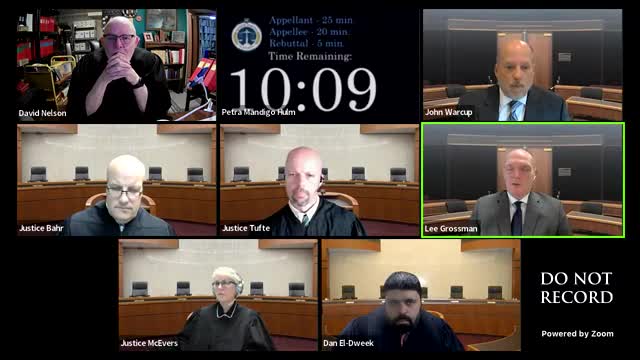City's appraisal process under scrutiny in landmark case
November 13, 2024 | Supreme Court , State Agencies, Organizations, Executive, North Dakota
This article was created by AI summarizing key points discussed. AI makes mistakes, so for full details and context, please refer to the video of the full meeting. Please report any errors so we can fix them. Report an error »

In a recent government meeting, significant discussions emerged regarding the building permit application process, particularly focusing on the case involving Rod Schwandt and property owner Mister Hoff. For the first time in 50 years, Schwandt did not adhere to the established requirement of $140 per square foot to assess construction costs. Instead, the city received two appraisals that both Schwandt and fellow official Pat Sampson reviewed, ultimately leading to a valuation of $115,000 for the project.
The meeting highlighted the implications of the permit application, which explicitly states that it does not provide any warranties regarding construction or code compliance. This raised questions about Hoff's reliance on the appraisals, as the application itself suggests no assurances are given.
Mister Grossman, a participant in the discussion, emphasized that the permittee must comply with all codes, and the language in the application could be interpreted as a disclaimer of warranties. Despite this, it was noted that Hoff had direct contact with the city and consulted with Sampson, who analyzed the appraisals and concluded that the project did not constitute a substantial improvement.
The city’s determination was based on the appraisals, which valued the property at $230,000 and $345,000, respectively, rather than on construction costs. This distinction is crucial, as the substantial improvement rule compares the cost of improvements to the value of the original structure, not the expenses related to construction materials and labor.
As the discussions unfolded, it became clear that the interpretations of the permit application and the reliance on appraisals would play a critical role in determining the outcome of Hoff's case. The meeting underscored the complexities involved in navigating building regulations and the importance of clear communication between property owners and city officials.
The meeting highlighted the implications of the permit application, which explicitly states that it does not provide any warranties regarding construction or code compliance. This raised questions about Hoff's reliance on the appraisals, as the application itself suggests no assurances are given.
Mister Grossman, a participant in the discussion, emphasized that the permittee must comply with all codes, and the language in the application could be interpreted as a disclaimer of warranties. Despite this, it was noted that Hoff had direct contact with the city and consulted with Sampson, who analyzed the appraisals and concluded that the project did not constitute a substantial improvement.
The city’s determination was based on the appraisals, which valued the property at $230,000 and $345,000, respectively, rather than on construction costs. This distinction is crucial, as the substantial improvement rule compares the cost of improvements to the value of the original structure, not the expenses related to construction materials and labor.
As the discussions unfolded, it became clear that the interpretations of the permit application and the reliance on appraisals would play a critical role in determining the outcome of Hoff's case. The meeting underscored the complexities involved in navigating building regulations and the importance of clear communication between property owners and city officials.
View full meeting
This article is based on a recent meeting—watch the full video and explore the complete transcript for deeper insights into the discussion.
View full meeting
